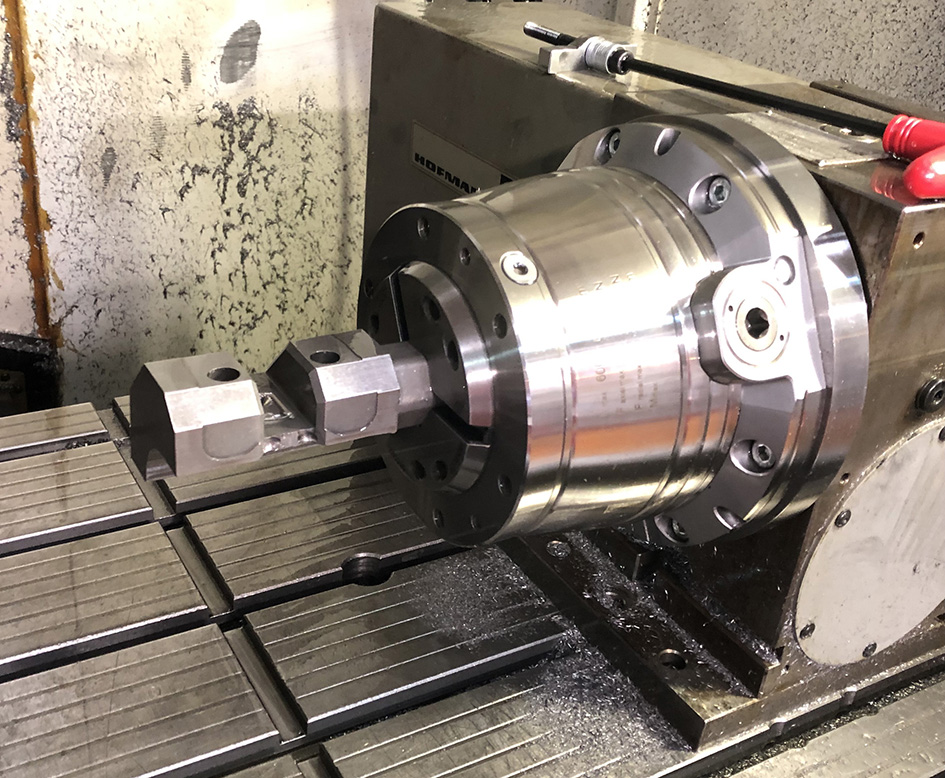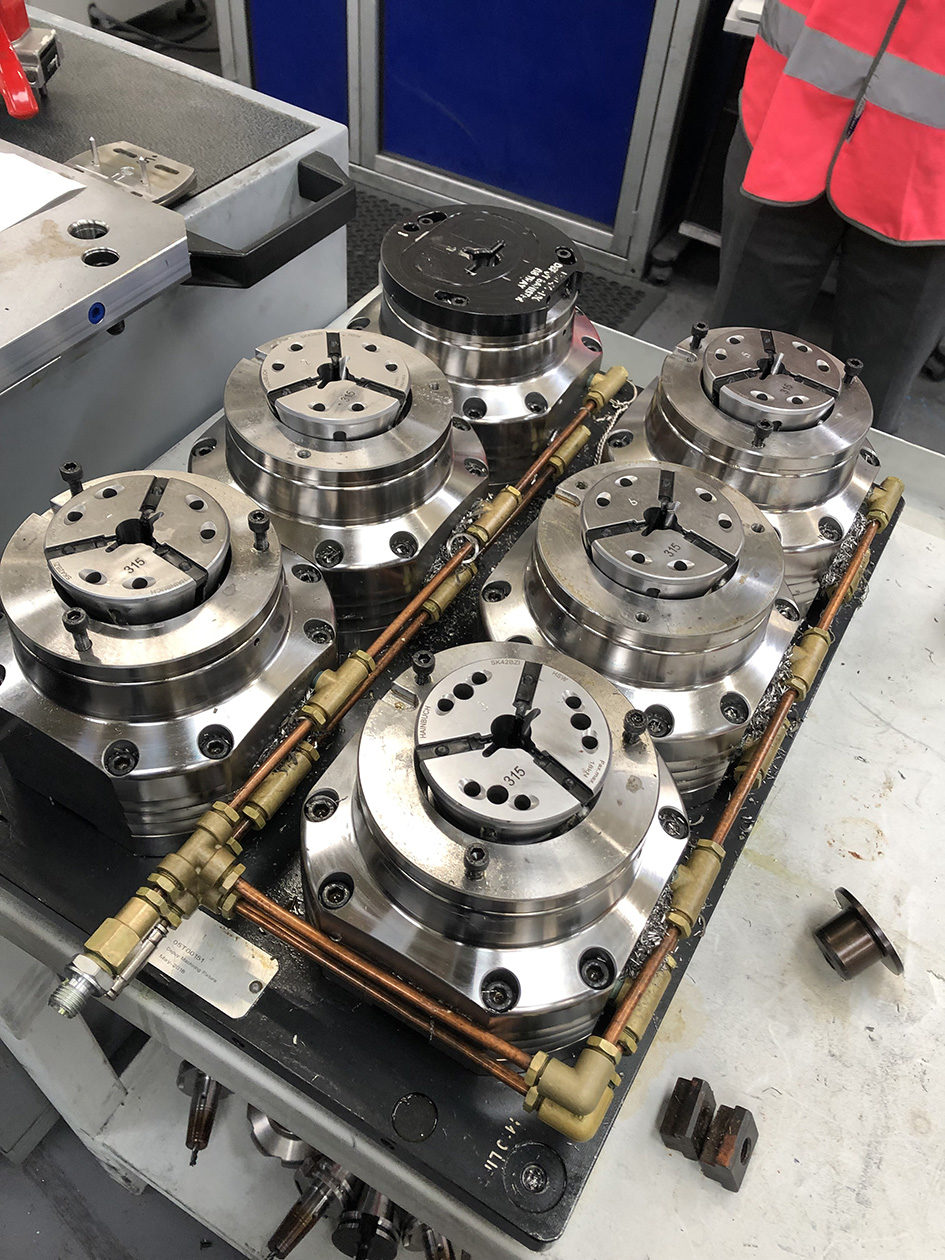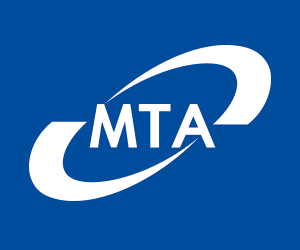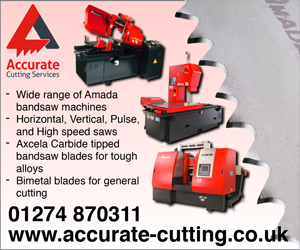Founded in 1963, Tecomet is a market leading manufacturer of complex, high-precision products and services for the medical device, aerospace and defense sectors. So, when Tecomet needed a secure and flexible workholding solution for its machine shop, the company turned to Hainbuch and its Manok stationary clamping system.
With 17 global manufacturing facilities in five countries, Tecomet employs over 2500 people. At the company’s Sheffield facility where component precision, quality and surface finishes are critical, Hainbuch provided the most suitable and flexible solution. The company’s first investment in Hainbuch equipment was the 65mm Manok stationary chuck for its DMG DMU 50 machining centre. Commenting on this Mr Stephen Jackson from Tecomet says: “What we used to do here is hold the job in a two-jaw chuck and this gave us a lot of issues with vibration and positional accuracy. So, we opted for the Manok 65 from Hainbuch and it solved a lot of issues for us. The positional accuracy is spot-on and there are no more scratches or issues with surface finish. Furthermore, it has saved a lot of re-working and secondary finishing – it’s a very good system.”
“The rigidity of the Manok has improved our tool life dramatically and reduced our tooling costs. Furthermore, we have been able to push the tools harder and run the machines faster than before and this has improved our cycle times while reducing tool consumption. On this particular femoral knee job, we are looking to maintain a precision level of +/-10 microns. One key point is that we have numerous 5-axis machine tools on-site and we can interchange the Hainbuch system, easily placing it on another machine if necessary. It’s simple, quick and easy to use and the support from Hainbuch has been very good.”
The Hainbuch Manok offers the potential for lateral set-ups on base plates and it is available with a wide variety of adaptable elements that offer complete modularity for end users demanding a flexible approach to their workholding. Since the investment in the Manok system, Tecomet has extended its investment in Hainbuch equipment with a series of systems on virtually every machine throughout the machine shop.

Following the success of the Manok, Tecomet purchased a pneumatic fixture plate with six Hydrok 42mm collet chucks from Hainbuch. Stephen Jackson continues: “We are using this system for the production of a medical tibial tray, which is a forging with a small amount of machining. To clamp a forging, we have a standard collet that we have machined relative to the fixture. Essentially, we machined a pocket out of the collets to suit the forging. As it is a 3D shape, this keeps it accurate and we can machine it in-house. This keeps our lead times down and enables us to react to customer demands very quickly. The Hydrok system is clamping 6 parts in a single set-up, pulling the parts down with impressive clamping forces and precision. We opted for the pneumatic system as we are using the configuration on an older machine that couldn’t use hydraulics.”
“Despite using a pneumatic system, we are not suffering from any lack of clamping force – it’s just about ensuing we have the right air pressure in the system. The Hainbuch unit is also interchangeable and we can put other 3-axis jobs on the machine in the Hydrok configuration. The flexibility is impressive as the fixture plate and Hydrok system can be transferred to any of our 3 and 5-axis machines. Before the Hydrok system, we used to clamp jobs in two jaw chucks and jobs used to spin and vibrate and even mark the surfaces. Now, we can hit jobs much harder and faster. Workholding is the most important part of our business, without that you have nothing.”
On another machining centre at Tecomet, the hydraulically loaded Hydrok clamping system connects through the base of the machine table to improve clamping set-ups, reduce lead times and maximise the available work envelope. Commenting on this David Noakes from Hainbuch says: “What we have here is a collet that is hidden under the end stop. The parts are dropped onto the Hydrok to hold the part. This Hydrok unit has a very small profile and this was essential in this application to hit all faces of the part during 5-axis machining. All the systems here have evolved from the introduction of the manual Manok system and Tecomet has now moved onto hydraulic solutions as well as the pneumatic clamping systems. Tecomet want to robot load parts on this particular machine, so the clamping actuation is automated. We have set the system up to reach the optimal clamping forces and pressure to deliver optimum surface finishes by reducing vibration, which is a paramount aspect with sensitive parts.”





